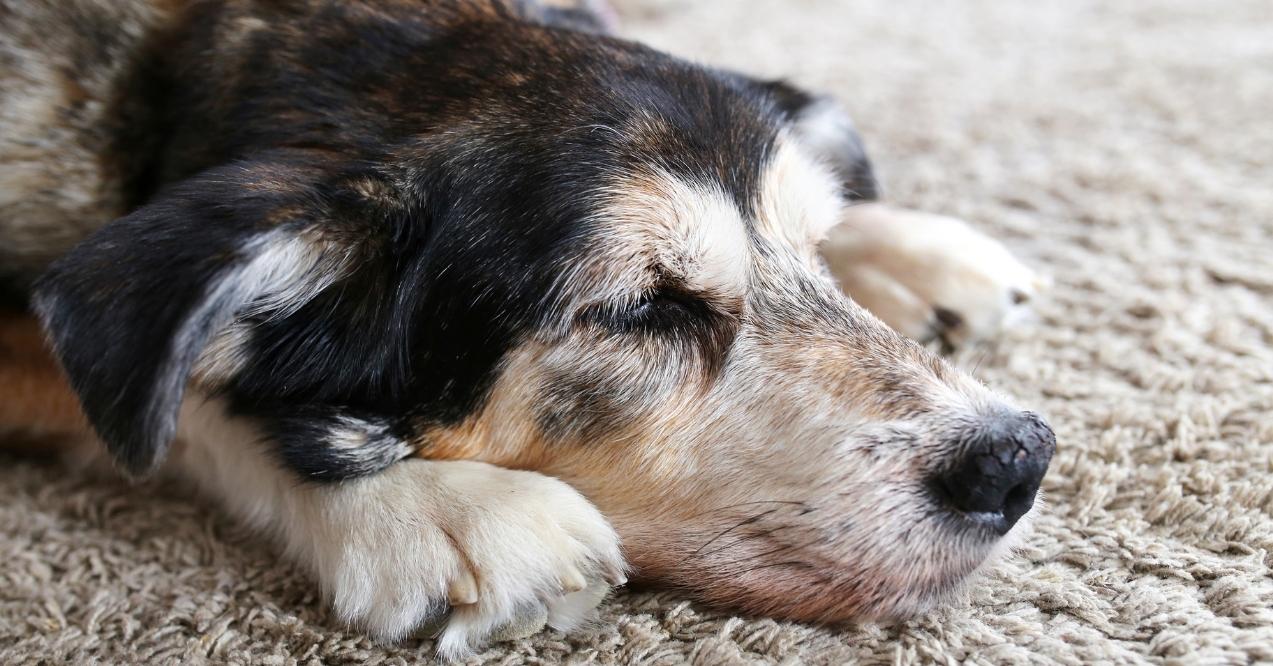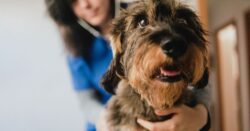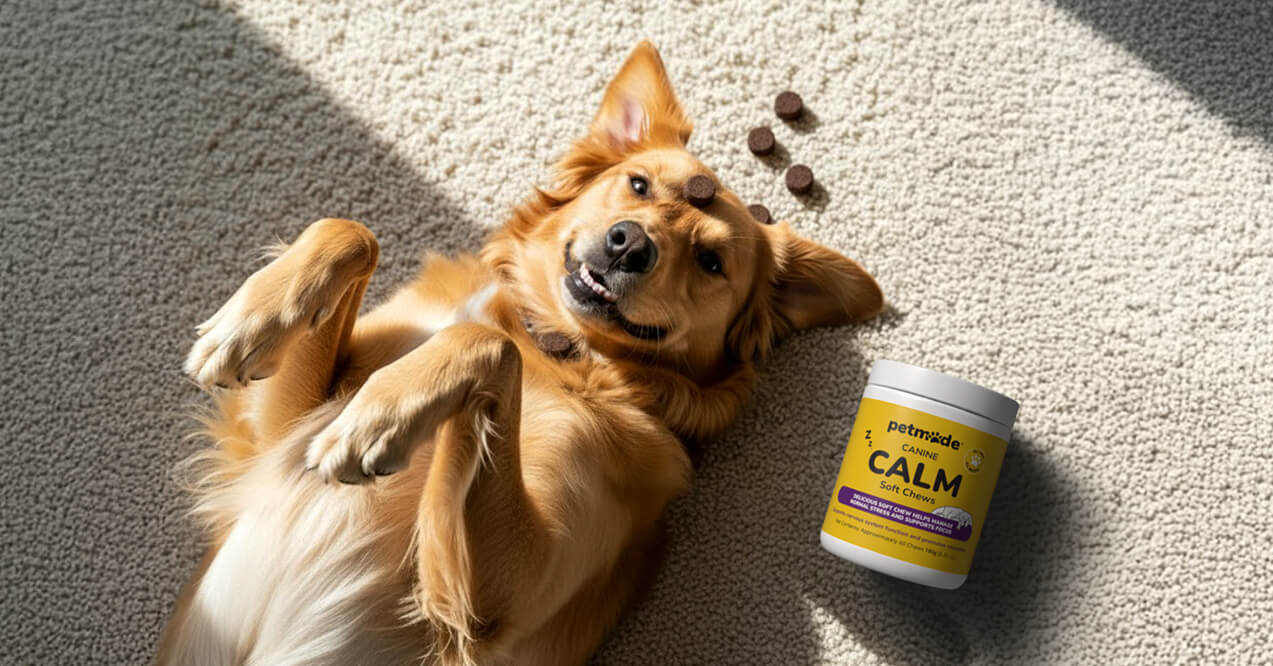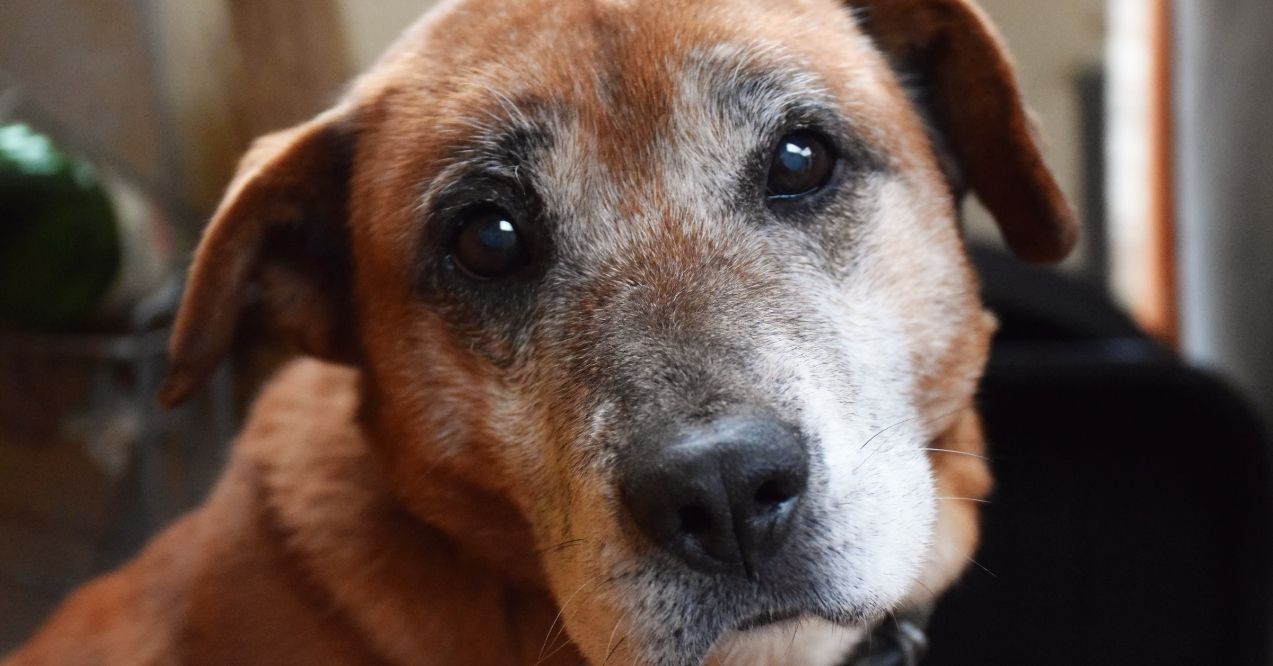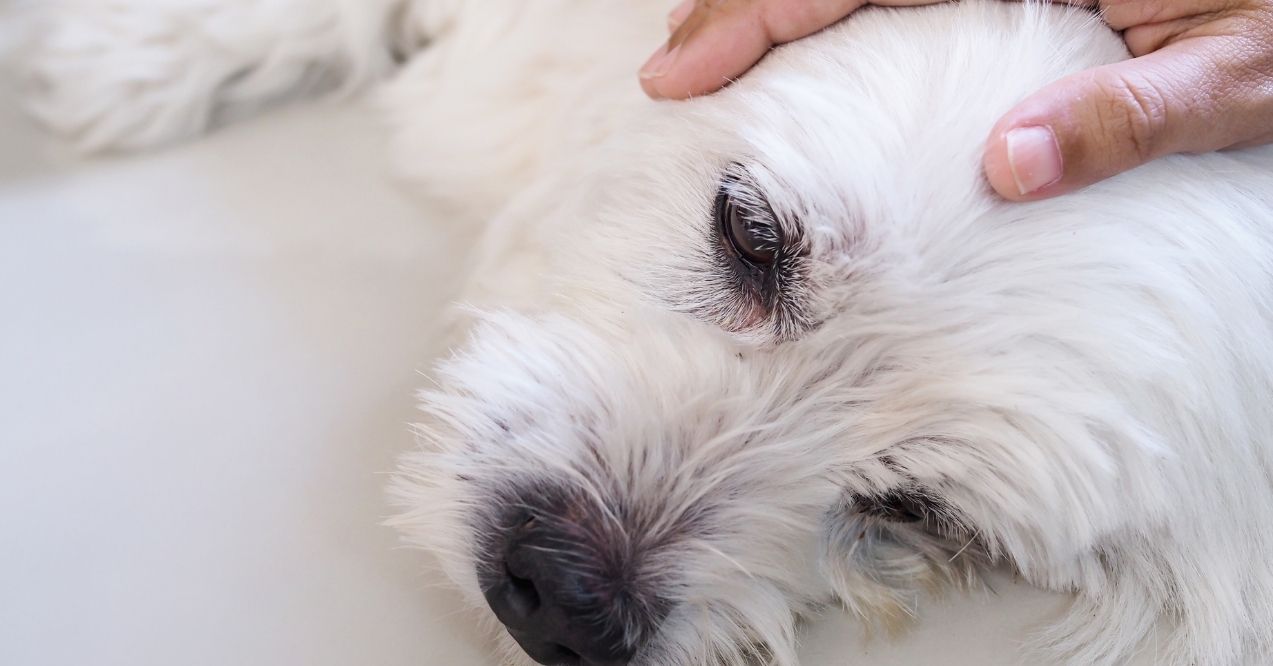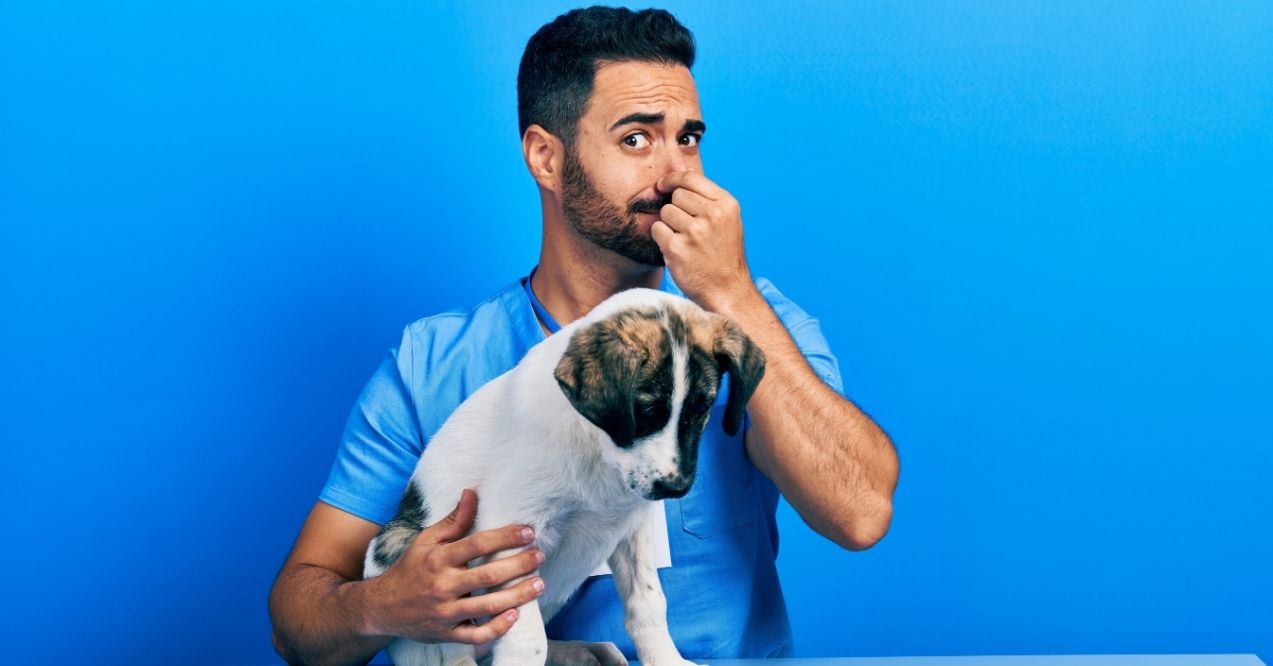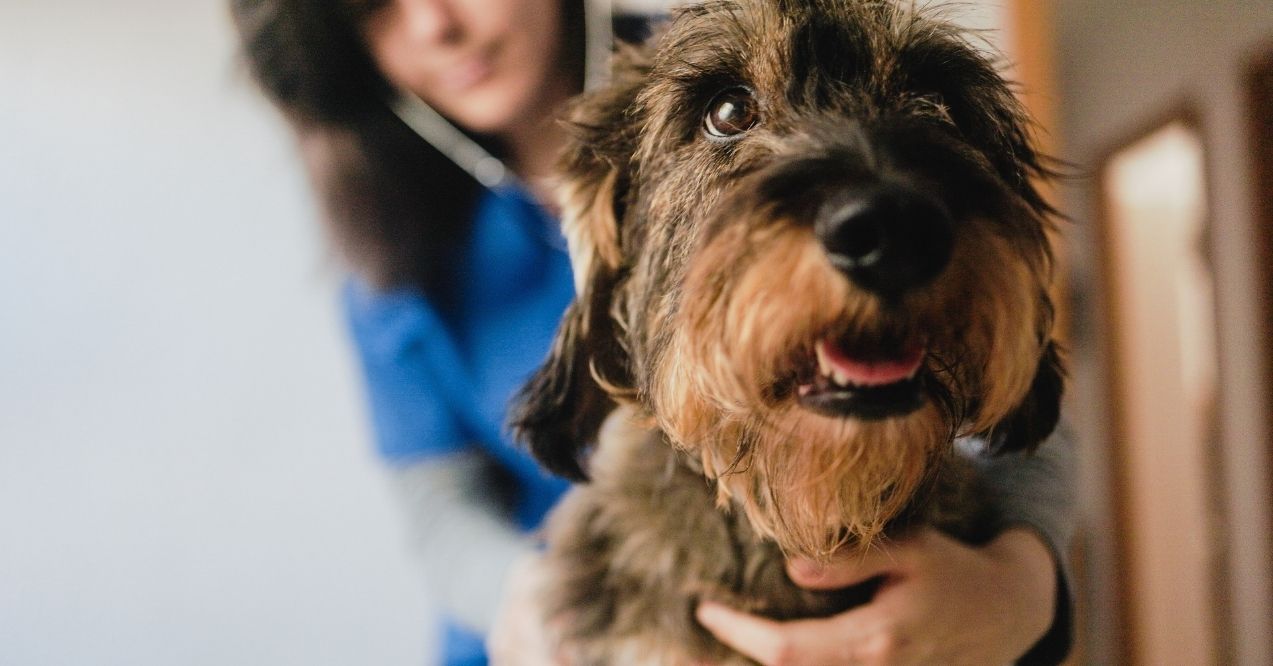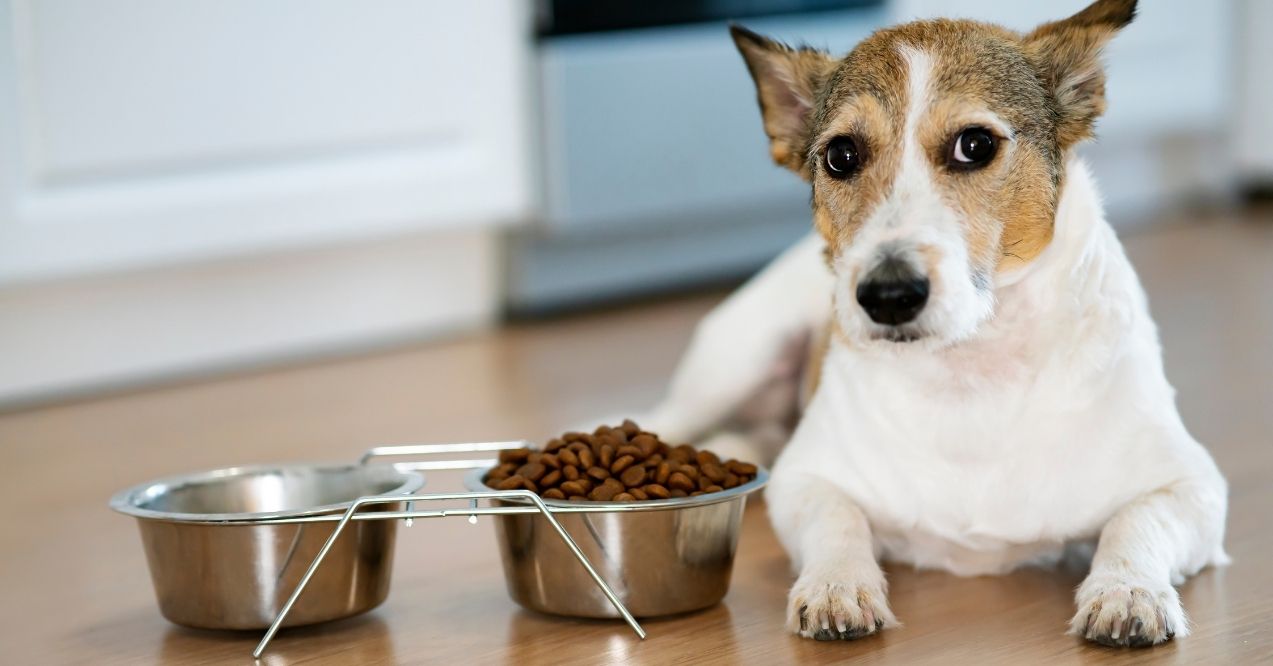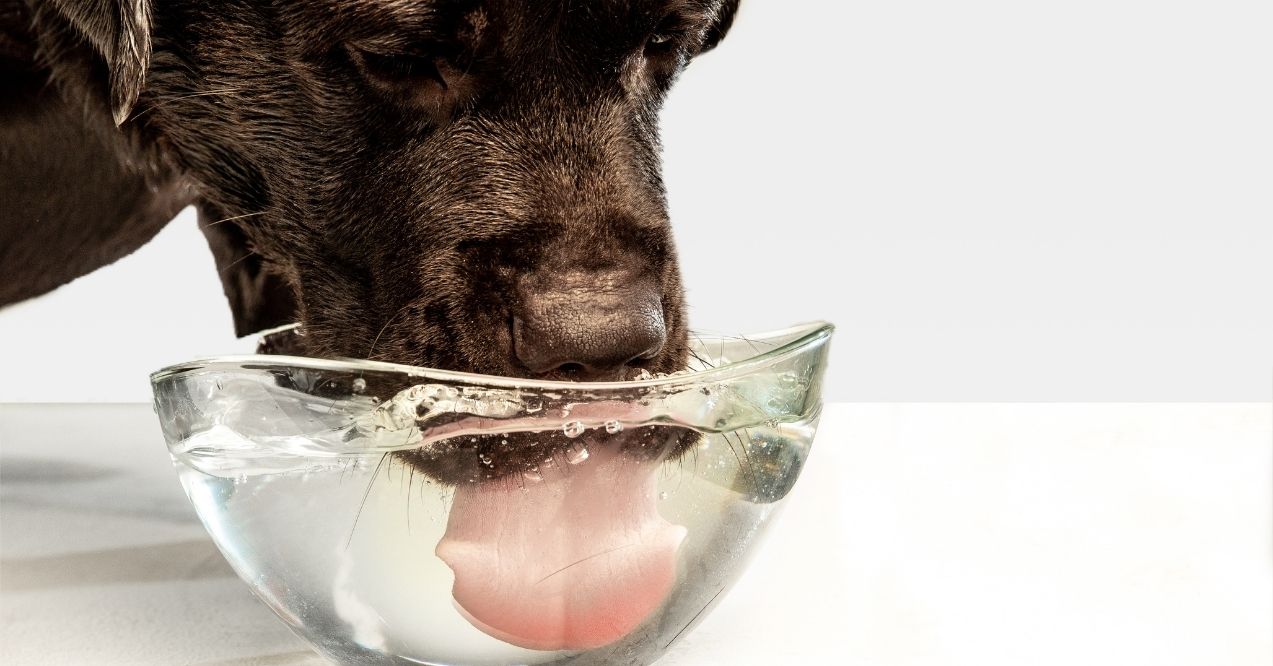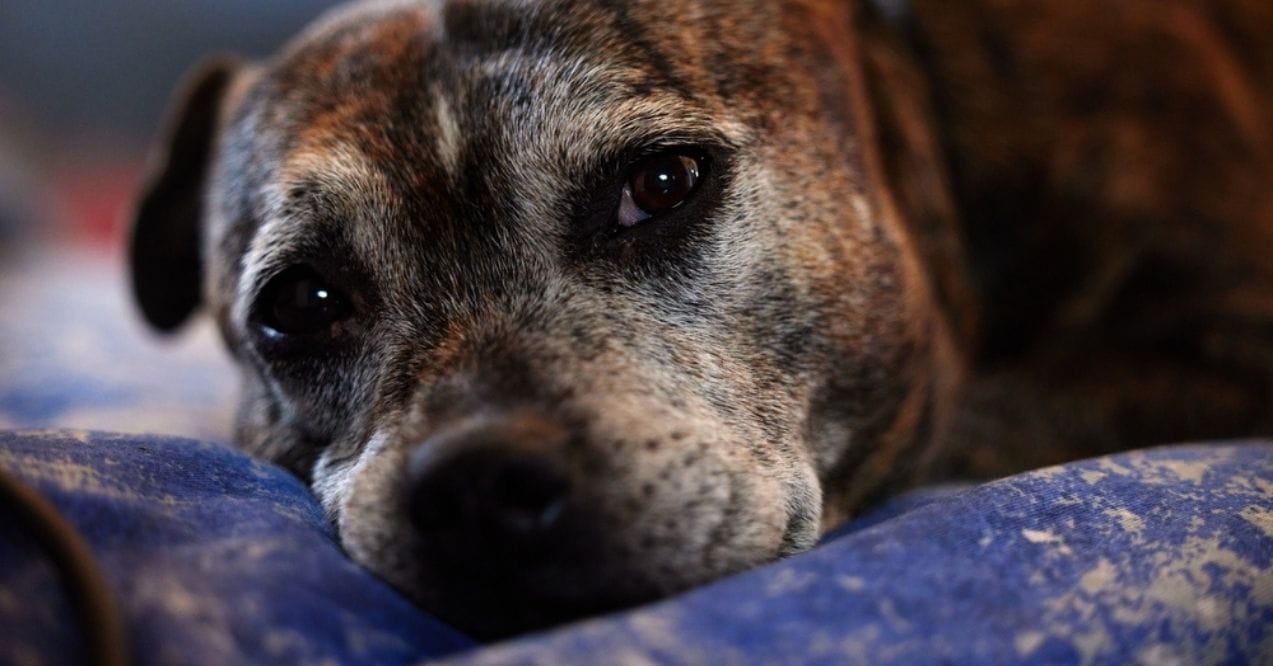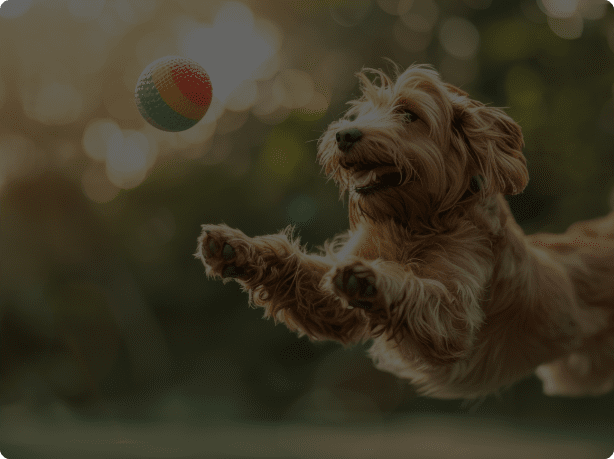7 Signs Your Dog Is Getting Old
Growing up with a furry friend means watching them change through the years. As time passes, your loyal companion may start showing signs your dog is getting old. These changes can sneak up on you, often appearing so gradually that you might not notice right away.
This guide will help you spot the common signs of age in dogs, along with practical tips to keep your senior pup comfortable and happy during their golden years.
1. Greying Fur and Thinning Coat
That salt-and-pepper look around your dog’s muzzle is often one of the first visible signs of old age in dogs. Much like humans, dogs develop gray or white fur as they age, typically starting around the face and muzzle before spreading to other areas.
Along with graying, you might notice your dog’s coat becoming thinner or patchier. This happens as aging affects hair follicles, sometimes resulting in a less lustrous coat or even small bald spots. Brushing more frequently can help distribute natural oils and remove loose fur.
While these changes are usually normal signs your dog is getting old, sudden or extreme hair loss might point to other issues. A patchy coat combined with skin irritation, excessive scratching, or unusual odor may warrant extra attention. In these cases, changes in grooming routine and diet adjustments can often help maintain coat health as your dog ages.
2. Slower Movement and Mobility Issues
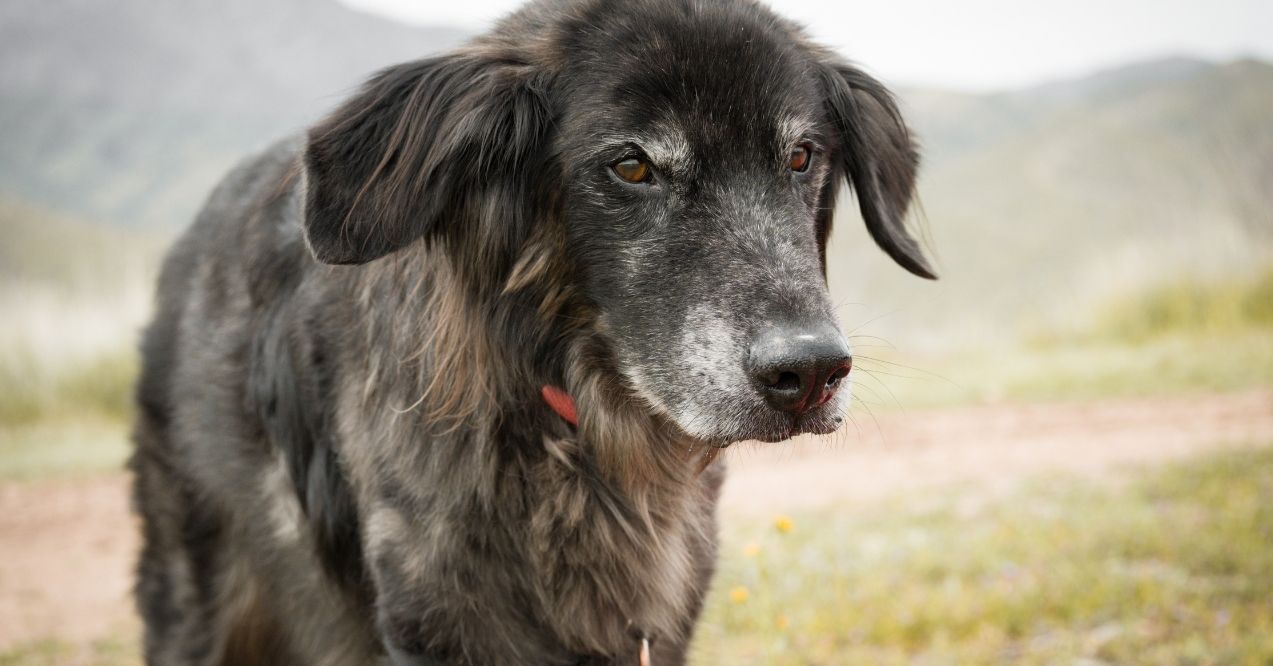
As dogs age, their energy and agility naturally decline. You might notice your once-sprightly companion hesitating before jumping into the car or taking stairs more carefully.
This slowing down is among the most common signs and symptoms of aging dogs. Your senior pup may take longer to get up after resting or seem stiff, especially in the mornings or after napping. They might be less eager for long walks or tire more quickly during play sessions.
These mobility changes often stem from natural joint wear over time. Larger breeds typically experience these dog old age symptoms earlier and more severely than smaller breeds. Certain breeds like German Shepherds, Labradors, and Retrievers may be more prone to joint issues as they age.
Tips for Supporting Joint Health
Gentle, consistent exercise helps maintain muscle tone and joint flexibility in aging dogs. Consider shorter, more frequent walks rather than one long outing. Swimming offers excellent low-impact movement if your dog enjoys water.
An orthopedic bed provides crucial support for aging joints. Look for memory foam options that distribute weight evenly and reduce pressure points. Placing these beds in warm, draft-free areas can also ease stiffness.
Ramps or steps can help your senior dog access furniture or vehicles without jumping. Non-slip mats on slippery floors offer extra stability and may prevent falls that could lead to injury.
3. Weight Fluctuations
Many older dogs gain weight as their metabolism slows and activity levels decrease. This extra weight puts additional strain on already aging joints, potentially making mobility issues worse. You might notice your dog’s shape changing, with a rounder appearance or less defined waistline.
Conversely, some senior dogs lose weight despite eating normally. This may happen due to reduced muscle mass or changes in how their body processes nutrients. A gradual thinning, particularly noticeable along the spine or hip bones, might be among the signs of age in dogs you’ll observe.
Both weight gain and loss can affect your dog’s overall health and comfort as they age. Regular weigh-ins at home or during vet visits can help you track changes and adjust care accordingly.
Maintaining a Healthy Weight
Adjust your aging dog’s diet to match their changing needs. Senior-specific foods often contain modified protein levels and calorie content to support healthy weight, and knowing what to feed old dogs can make a big difference in how they age. Portion control becomes increasingly important as metabolism slows.
Maintain regular feeding schedules with measured amounts to prevent overfeeding. Treats should make up no more than 10% of daily caloric intake, though they remain important for training and bonding.
Switch to shorter, more frequent exercise sessions that keep your dog active without overexertion. Mental stimulation through food puzzles or scent games can burn calories while engaging their mind.
4. Vision and Hearing Loss

As your dog ages, you may notice changes in how they respond to the world around them. Diminished vision and hearing are common signs your dog is getting old, though many pups adapt so well you might not notice immediately.
For vision, you might spot cloudiness in your dog’s eyes or a bluish haze over the lens. Your once-sharp-eyed companion might start bumping into furniture, especially if you’ve rearranged it recently. They may seem startled when you approach from certain angles or hesitate on stairs and in dim lighting.
Hearing changes can be subtle too. Your dog might stop responding when called from another room or sleep through noises that once had them alert in seconds. Some dogs bark more as their hearing fades, almost as if they’re trying to fill the growing silence around them.
Signs of Vision and Hearing Loss
Your dog’s sensory changes may be subtle at first, but knowing what to watch for helps you identify vision loss early. Common indicators include:
- Bumping into furniture, especially after rearrangement
- Hesitation on stairs or when entering darker rooms
- Cloudy or bluish appearance in the eyes
- Startling when approached from certain angles
- Difficulty finding toys or treats tossed nearby
Hearing loss presents with its own set of behaviors that you may notice in your aging companion. Watch for these signs:
- Not responding when called from another room
- Sleeping through sounds that previously caught their attention
- Increased barking (sometimes due to confusion)
- No reaction to familiar sounds like doorbells or car arrivals
- Startling when touched if they didn’t see or hear you approach
To help your aging dog adapt to these sensory changes, maintain consistent furniture arrangements and use gentle floor taps when approaching. Consider placing scented markers near potential hazards like steps, and pair visual cues with verbal commands to maintain communication as your pet’s senses change.
5. Cognitive Decline and Behavioral Changes
Has your loyal companion started staring blankly at walls or getting lost in familiar rooms? These might be signs your dog is getting old mentally. Just as humans can experience cognitive changes with age, dogs may develop similar issues.
You might notice your once-punctual pup forgetting established routines, like standing at the wrong door for walks or appearing confused about mealtime. Some dogs begin barking at nothing in particular or pace restlessly, especially during evening hours – a phenomenon sometimes called “sundowning.”
Sleep patterns often shift too, with more daytime napping and nighttime restlessness. Your formerly house-trained dog might have accidents indoors, not from physical problems but simply because they’ve forgotten their training.
Social behavior can change as well. Your once-social butterfly might become withdrawn or irritable around other dogs or family members. Alternatively, some aging dogs become more clingy and anxious about separation.
How to Manage Cognitive Decline
Maintain consistent daily routines for feeding, walking, and sleeping. Predictability helps aging dogs compensate for cognitive decline by relying on habit when memory falters.
Introduce new puzzle toys that dispense treats when manipulated correctly. These mental workouts may help slow cognitive decline while providing enjoyable stimulation for your senior pup.
Consider food bowls with distinctive colors that stand out against your floor. This visual contrast can help aging dogs locate their meals more easily when vision or cognitive function diminishes.
6. Increased Sleeping and Reduced Energy Levels
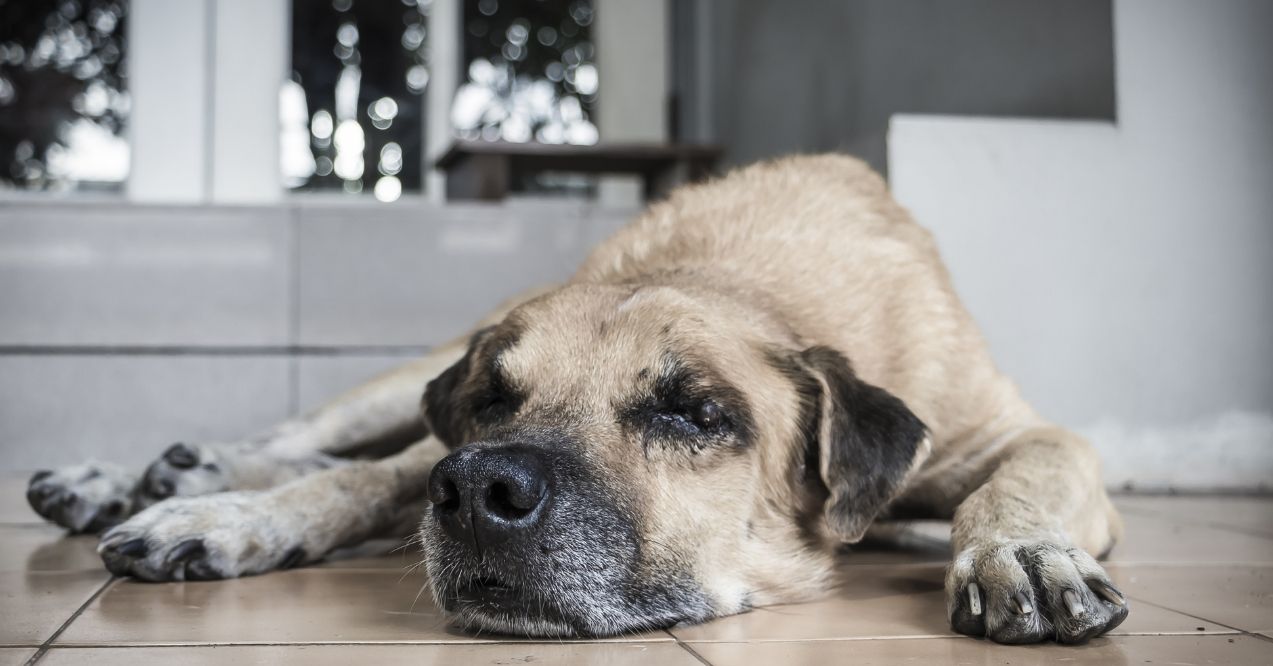
If your once-energetic pup now spends most of the day napping, you’re witnessing one of the classic signs your dog is getting old. Senior dogs typically need more sleep and show noticeably reduced energy levels compared to their younger years.
You might find your aging companion sleeping through activities that once caused excitement, like visitors arriving or food preparation sounds. When awake, they may seem less interested in play or exploration, preferring to observe rather than participate in family activities.
This increased need for rest reflects natural changes in your dog’s metabolism and energy production. Their bodies simply require more recovery time after activity. While puppies and young adult dogs might bounce back quickly after exercise, senior dogs often need extended rest periods.
Encouraging Healthy Rest and Activity
Balance rest with gentle activity by offering short, engaging play sessions several times daily. Even five minutes of fetch or tug can provide valuable physical and mental stimulation without overtaxing senior energy reserves.
Create multiple comfortable resting spots throughout your home so your dog can be near family activities while taking needed breaks. Orthopedic beds in living areas allow your dog to rest while staying connected to household life.
7. Behavioral Shifts and Increased Anxiety
As your dog ages, you might notice changes in their emotional responses and general demeanor. A previously confident dog may become more cautious or anxious – subtle but telling signs your dog is getting old.
Many senior dogs develop new sensitivities to noise, showing stress during thunderstorms or when household appliances run. This heightened reaction often stems from sensory changes combined with decreased ability to cope with stressors.
Separation anxiety may emerge or intensify in older dogs. Your once-independent companion might follow you from room to room or become distressed when left alone. Some aging dogs vocalize more, whining or barking when feeling uncertain.
Helping an Anxious Senior Dog
Create predictable daily routines that provide security for your aging dog. Consistent meal times, walks, and bedtime rituals help reduce anxiety by making each day more predictable.
Offer a “safe haven” where your senior dog can retreat when feeling overwhelmed. A quiet corner with their bed, favorite toys, and a piece of clothing carrying your scent can provide comfort during stressful times.
Consider using calming aids like soft music or white noise machines to mask startling sounds. These gentle audio backgrounds can be especially helpful during storms or noisy household activities.
Conclusion
Noticing signs your dog is getting old can be bittersweet – a reminder of passing time but also an opportunity to adapt your care to their changing needs. From the first gray whiskers to shifts in energy and behavior, these changes signal a new chapter in your relationship with your furry friend.
With awareness of the signs of old age in dogs and thoughtful adjustments to their routine, you can help your loyal companion enjoy their golden years to the fullest. Knowing how to care for a senior dog day-to-day—through diet, exercise, and a supportive home environment—can make all the difference in their comfort and happiness.
The most common signs include graying fur (especially around the muzzle), reduced mobility, increased sleeping, vision/hearing changes, weight fluctuations, cognitive changes, and increased anxiety or behavioral shifts.
Look for reluctance to climb stairs or jump, stiffness after resting, limping, irritability when certain areas are touched, and changes in gait or posture. Morning stiffness that improves with activity is particularly common.
This varies by breed and size. Generally, small dogs may not show aging signs until 10-12 years, medium breeds around 8-9 years, and large or giant breeds as early as 6-7 years.
Yes, larger breeds typically age faster than smaller breeds. Additionally, some purebred dogs may show specific age-related issues earlier based on genetic predispositions common to their breed.
Senior dogs often benefit from foods with moderate protein levels, controlled calories, added omega fatty acids, and enhanced antioxidants. Easily digestible formulations with appropriate fiber levels support aging digestive systems.
Most veterinarians recommend twice-yearly checkups for senior dogs, as they can develop health issues more rapidly than younger dogs. Regular bloodwork can catch developing problems before they become serious.
Advertisement. This site offers health, wellness, fitness and nutritional information and is designed for educational purposes only. You should not rely on this information as a substitute for, nor does it replace, professional medical advice, diagnosis, or treatment. If you have any concerns or questions about your health, you should always consult with a physician or other health-care professional. Do not disregard, avoid or delay obtaining medical or health related advice from your health-care professional because of something you may have read on this site. The use of any information provided on this site is solely at your own risk.
